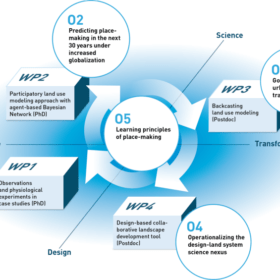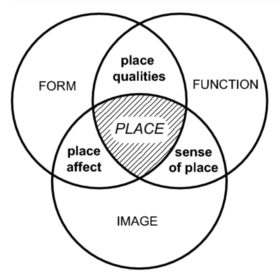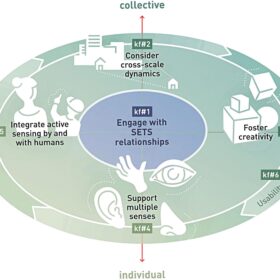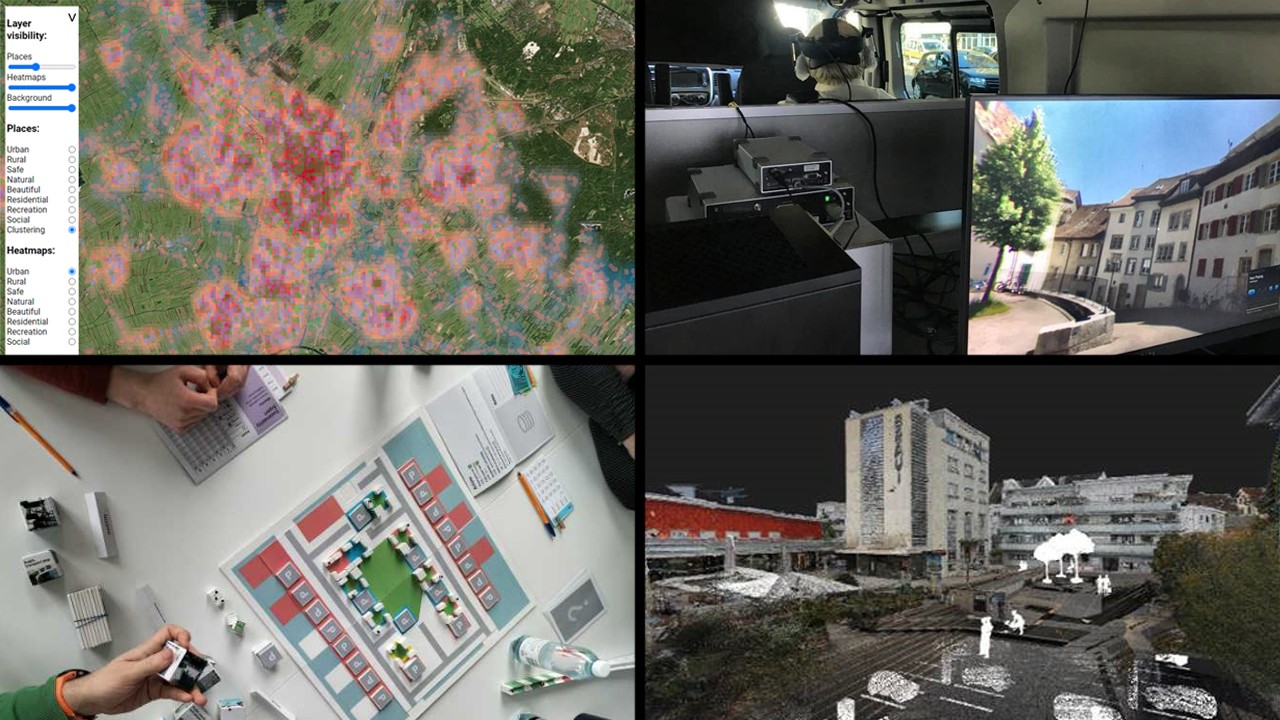
Unprecedented urbanisation is transforming productive agricultural land into standardised settlements in which people are losing their sense of place and the motivation to initiate change. How people feel about, interact with, or want different places to be shaped, has been systematically researched through the lenses of place and place-making, which are useful when combining physical landscape changes within a people-centred perspective.
From Place and Place-making to Tools and Methods
Place as a concept can be all-encompassing and subjective. When operationalising place it is useful to systematise places into their physical location (form), the activities we can do in them (function), and our interpretation and feelings (image). By extension, place-making is the set of processes which generate and change places.
This general theoretical framework was applied in the Globescape project to specific research questions, using many research methodologies in diverse places within the Netherlands and Switzerland: large scale representative surveys to quantify place-based indicators, field experiments using electrodermal activity (EDA), measurements in virtual reality environments to measure emotional reactions to urban, rural, or peri-urban places, serious gaming to explore possible place-making pathways, and perceptions on what enables and hinders change in their neighbourhoods. These are further being synthesised into novel methodological hybrids in 3D point-cloud environments to offer people a hands-on access to the complex process of place-making.
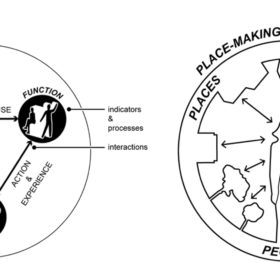
Preliminary Place-making Patterns for Environmental Psychology and Planning Sciences
Results of the EDA measurements show that peri-urban areas trigger unpleasant feelings, in contrast to measurements in the urban places, which trigger positive emotions. A regression analysis showed that emotional reactions to the physical setting plays a role in place-making intentions in the case of the rural and urban places. This contrasts to peri-urban places, which did not evoke emotions that could help trigger neighbourhood place-making processes.
Similar to existing place-attachment research, a representative survey of 10’000 people in the Netherlands was used to develop a first psychometric measurement model for place-making. Latent variable modelling shows a three factor structure to place-making, comprised of: one’s personal attitudes to place-making (factor 1: person), the influence of existing administrative or collective procedures (factor 2: procedures), and already existing outcomes of place-making (factor 3: place).
The multi-stakeholder interactions through serious gaming found that planning processes are too inflexible to absorb 1) current needs of individuals and 2) changing climate and biodiversity conditions. Also, too many details are fixed in advance, not allowing for learning or adapting during spatial development. Strategically located stakeholders (e.g. landowners) have the power to block publicly desired place-making. However, identity helps build community feeling and place-attachment, and can be activated by cultural events and place-specific activities.
As the challenges facing these new and fragile landscapes become more complex to solve, so should our understanding of the patterns and processes shaping these places. Our findings allow to successfully systematise place-making to tackle the challenges facing new places such as peri-urban landscapes and the people living therein.
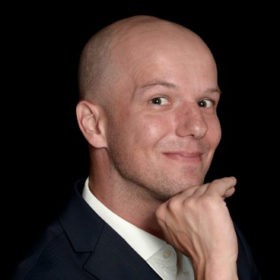 Michal Switalski is a PhD candidate at the Planning of Landscapes and Urban Systems (PLUS, IRL) research group. He is developing theoretical frameworks and deploying measurement methods for place and place-making, using traditional machine learning and deep learning meth-ods in the fields of environmental psychology and spatial economics.
Michal Switalski is a PhD candidate at the Planning of Landscapes and Urban Systems (PLUS, IRL) research group. He is developing theoretical frameworks and deploying measurement methods for place and place-making, using traditional machine learning and deep learning meth-ods in the fields of environmental psychology and spatial economics.
Dr. Marcelo Galleguillos is a post-doctoral researcher with the Planning of Landscape and Ur-ban Systems (PLUS) research group at ETH Zürich, researching emotional responses to land-scapes using electrodermal activity measurements.
Laura Schalbetter is a PhD candidate with the Planning of Landscapes and Urban Systems (PLUS, IRL) research group, developing point cloud and virtual reality tools in landscape planning.
Johann Schuur is an ISTP master student researching serious gaming applications to place-making with the Planning of Landscapes and Urban Systems (PLUS, IRL) research group.
Prof. Dr. Adrienne Grêt-Regamey is the chair of the Planning of Landscape and Urban Systems (PLUS, IRL) group at ETH Zürich and Principal Investigator of the ERC Globescape project.
Funding: The Globescape research project has received funding from the European Research Council (ERC) under the European Union’s Horizon 2020 research and innovation programme (Grant agreement No. 757565).
